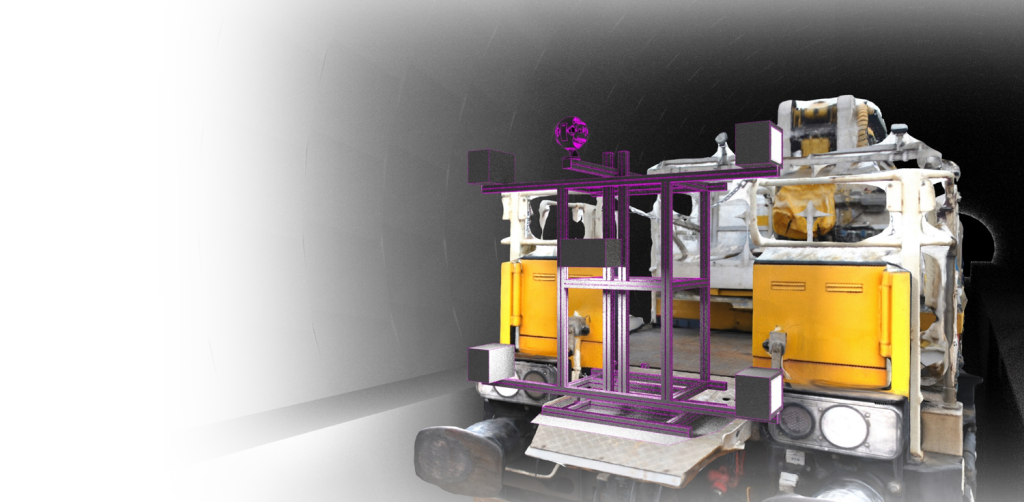Article contributed by Noemi Roecklinger, iData Analyst, Laser Scanning, Computer Vision and Machine Learning at Arup London
Every year, a total of £8 billion are spent on repair and maintenance in Infrastructure in the UK; with inspections alone costing up to £100 million. To date, the majority of tunnel inspections are manual and labor-intensive, with inspectors working at night in potentially elevated H&S risk conditions. Traditionally, inspectors use a pen-and-paper approach, manually capturing defects while walking through the tunnels supplemented by selected photos of defects.
Understandably, examining over 43km of High Speed 1 (HS1) tunnels requires a lot of resources and planning from Network Rail (High Speed) or NRHS, a client of one the engineering consultancy Arup (London). Competent staff, track possessions and maintenance vehicles need to be booked up to two years in advance. NRHS have identified the efficiency of traditional tunnel examinations as an opportunity for research and development (R&D). Arup have been supporting NRHS with developing approaches to automate inspections. These minimize resources and electrical isolations, reduce track time and collect comprehensive asset condition data.
An automated tunnel inspection and predictive maintenance system
 Arup proposed the design, build and deployment of an automated tunnel inspection and predictive maintenance system using computer vision techniques. Arup’s R&D system comprises two parts: firstly, a remotely operated modular build of a maintenance vehicle mounted unit housing an array of sensors. Arup have tested Leica and Faro scanners, FLIR thermal cameras and 360-degrees cameras such as the Insta360 Pro. The company further collaborated with University College London (UCL) to develop a bespoke camera rig using omnidirectional GoPro cameras. All of the above had to be designed in a way that is compatible with existing NRHS systems. The camera systems provide high quality video imagery that is of equivalent quality to photos taken during manual inspections. The system captures around 1km of tunnel every ten minutes of operation.
Arup proposed the design, build and deployment of an automated tunnel inspection and predictive maintenance system using computer vision techniques. Arup’s R&D system comprises two parts: firstly, a remotely operated modular build of a maintenance vehicle mounted unit housing an array of sensors. Arup have tested Leica and Faro scanners, FLIR thermal cameras and 360-degrees cameras such as the Insta360 Pro. The company further collaborated with University College London (UCL) to develop a bespoke camera rig using omnidirectional GoPro cameras. All of the above had to be designed in a way that is compatible with existing NRHS systems. The camera systems provide high quality video imagery that is of equivalent quality to photos taken during manual inspections. The system captures around 1km of tunnel every ten minutes of operation.
Secondly, Arup developed a bespoke dashboard and immersive viewer to visualize and analyze the tunnel. The web-based dashboard displays the data captured in 3D and allows for remote virtual inspections. Whilst working safely from the office, the inspector can tag new defects, look up historical data and perform comparative analysis. They are supported by Arup’s machine learning (ML) algorithm, that identifies features in the imagery, such as lineside equipment and defect lights. The ML algorithm and associated computer vision work flow includes feedback loops to progressively improve the algorithm’s capability to correctly identify features.
Interactive workshops
Developing Arup’s automated inspection approach was a collaborative effort working closely with NRHS to best understand their challenges and needs. Through a series of interactive workshops, Arup mapped out their current workflow and identified opportunities for increased efficiency. For example, Arup found that the shortage of resources was a significant bottleneck. Their modular hardware system facilitated greater opportunity for collaborative working across different disciplines, i.e. sharing maintenance vehicles, possessions and isolation staff. Collaborating on existing possessions reduces the demand on resources, isolations, and track time. Furthermore, by using 360-degrees video data capture, Arup’s automated inspections could reduce the number of night shifts from over forty to six. This significantly reduces 'boots-on-the-ballast' and costs, while collecting more comprehensive asset condition data.
Through the workshops, Arup also identified the need for improved rapid response times to incidents. Replacing manual defect capture at distinct locations by continuous 360-degrees video capture enables the engineers to plan their response more efficiently. When every delay minute counts, examiners benefit from comprehensive and frequent recordings of the tunnels. The data is more objective, reproducible and of comparable precision. Through benchmarking against NRHS historical datasets, Arup confirmed that they reliably captured defects as a human inspectors would. The image dataset yields an improved understanding of asset degradation, allowing better-planned interventions and avoidance of unplanned closure. The digital dashboard serves as a rapid screening tool to flag where conditions have worsened.
This project ultimately demonstrates how the residual life of an infrastructure asset can be more effectively managed, maintained and understood. It also shifts away from 'boots-on-the-ballast', removing personnel from potential hazardous environments, and minimizes disruption of site works. With Arup’s automated tunnel inspections, new, unconventional ideas are embraced in order to change the industry for the better.






